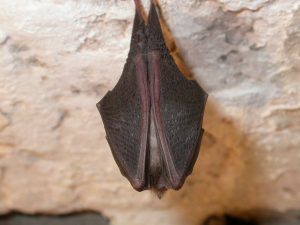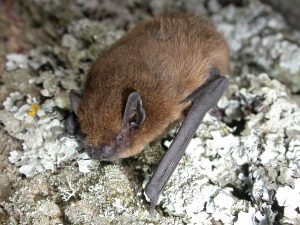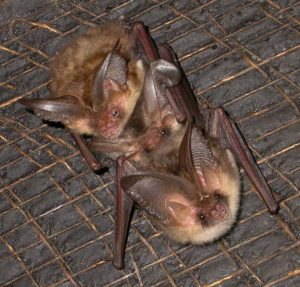Bat Surveys
There are 17 species of bats in the UK, and they are all protected under European law through the Conservation of Habitats and Species Regulations 2010 and The Wildlife and Countryside Act 1981 (as amended). This makes it an offence to capture, injure or kill a bat, or to damage or destroy a bat roost, even when no bats are present.
Bats commonly roost in buildings and trees and go unnoticed for years. However, most planning applications involving alterations to existing buildings now require a bat survey. It is best to check with your local authority as they may refuse an application without one. If you do require a bat survey then these are the steps we normally take:
 Step 1. Daytime Bat Surveys – this can be done at any time of the year. We will inspect the building or tree during the day to assess it for its suitability to support roosting bats, and to check for any evidence of bats. If we do find bats, evidence of bats, or think that the building/tree does have some suitability for bats then you may need to go to step 2. If we do not find any of the above and think that the building/tree is unsuitable for roosting bats then that is it and no further surveys are required.
Step 1. Daytime Bat Surveys – this can be done at any time of the year. We will inspect the building or tree during the day to assess it for its suitability to support roosting bats, and to check for any evidence of bats. If we do find bats, evidence of bats, or think that the building/tree does have some suitability for bats then you may need to go to step 2. If we do not find any of the above and think that the building/tree is unsuitable for roosting bats then that is it and no further surveys are required.
 Step 2. Nocturnal/activity Bat Surveys – nocturnal surveys are carried out during the spring/summer at dusk or dawn, normally for around two hours. We will stand around the building/tree, or walk transects of the field if we are carrying out an activity survey, with bat detectors which allow us to hear their echolocation. These surveys are done to understand the species, number and type of bat roost. The number of nocturnal surveys we carry out will depend on what we find during the daytime bat survey. It may only be one survey that is required, or it could be more. Do not worry, we always discuss with the client to find the most suitable approach to keep costs down, whilst also taking into account the bats. If no bats are found then no further measures are required. If bats are found then you may need to go to step 3.
Step 2. Nocturnal/activity Bat Surveys – nocturnal surveys are carried out during the spring/summer at dusk or dawn, normally for around two hours. We will stand around the building/tree, or walk transects of the field if we are carrying out an activity survey, with bat detectors which allow us to hear their echolocation. These surveys are done to understand the species, number and type of bat roost. The number of nocturnal surveys we carry out will depend on what we find during the daytime bat survey. It may only be one survey that is required, or it could be more. Do not worry, we always discuss with the client to find the most suitable approach to keep costs down, whilst also taking into account the bats. If no bats are found then no further measures are required. If bats are found then you may need to go to step 3.
 Step 3. Mitigation and Licencing – When we find a bat roost we need to ensure that it is not negatively impacted on by your works. This may just be a matter of timing your works accordingly, or putting up a bat box. However, we may need to apply for a licence from Natural England to consent to the works, and creation of an alternative roost site may be required. Do not panic! Bats rarely stop a development from going ahead, it is just a case of dealing with them appropriately.
Step 3. Mitigation and Licencing – When we find a bat roost we need to ensure that it is not negatively impacted on by your works. This may just be a matter of timing your works accordingly, or putting up a bat box. However, we may need to apply for a licence from Natural England to consent to the works, and creation of an alternative roost site may be required. Do not panic! Bats rarely stop a development from going ahead, it is just a case of dealing with them appropriately.
Please contact us to find out more or to get a free quotation and we will be happy to assist you.
